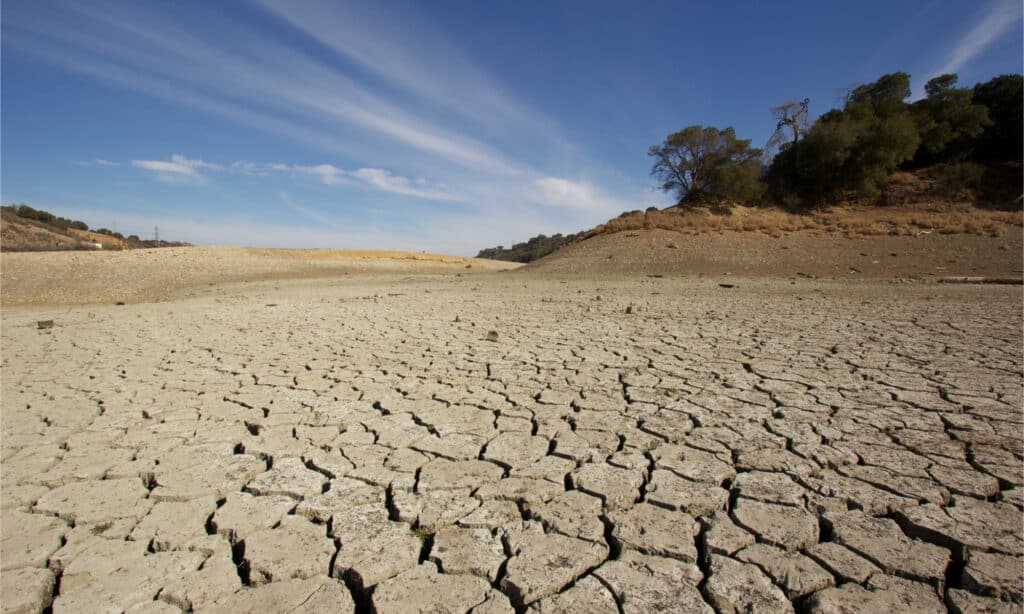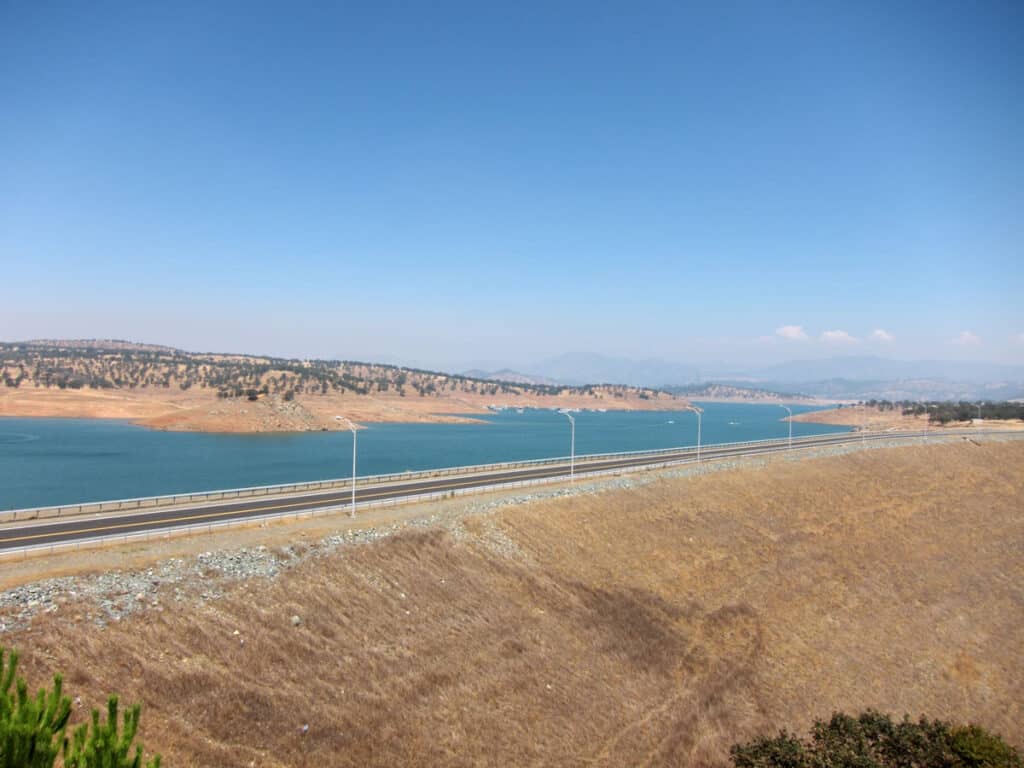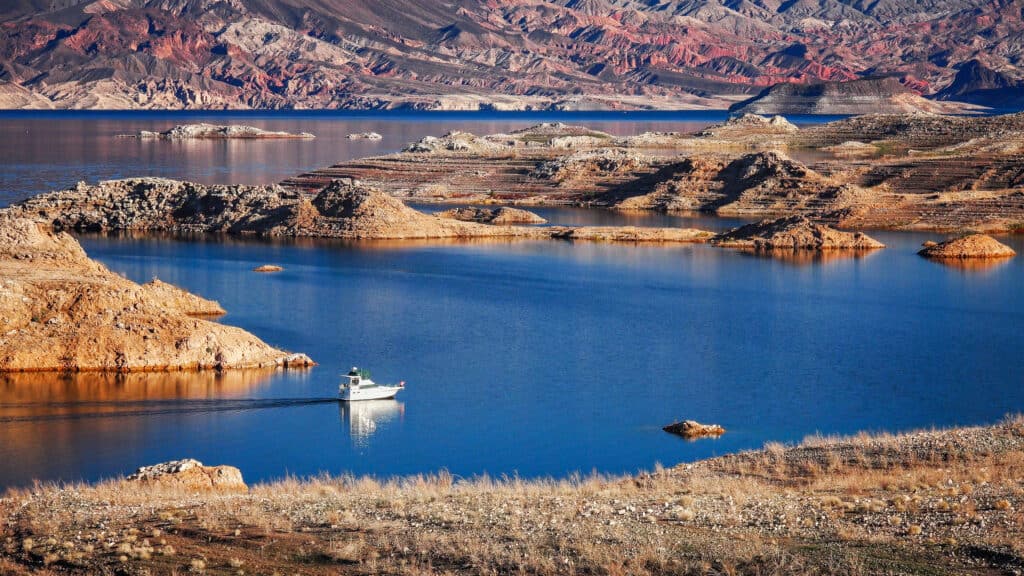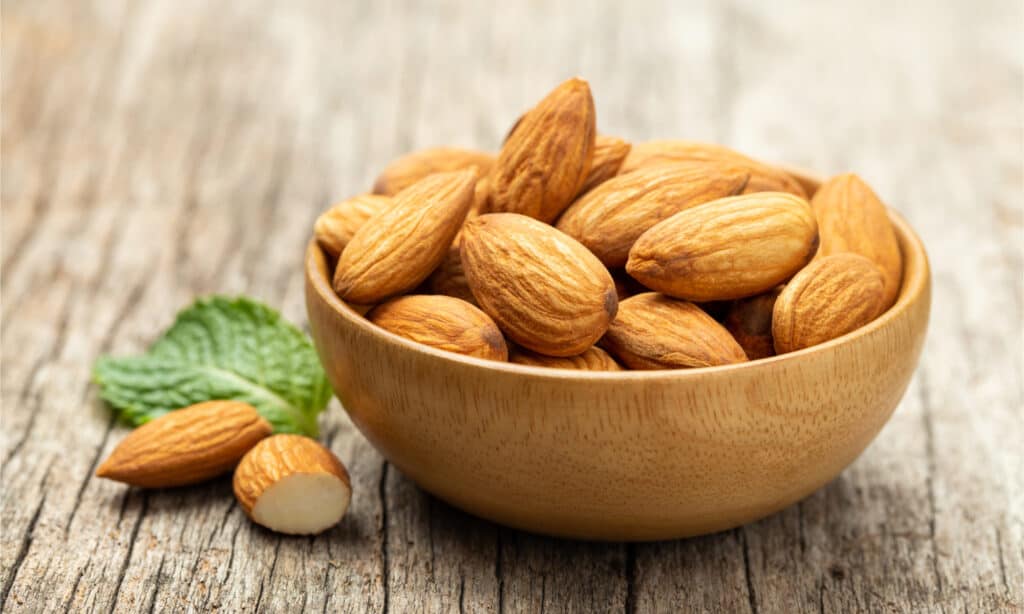The U.S. state of California is famous for its seemingly eternal sunshine, pristine beaches, and beautiful landscapes. However, California did not always look like it does today. Long ago, it was covered by vast deserts and grassland, but today it is filled with reservoirs that store water for its arid landscape. Even the wetlands and swampy marshes are now used for urban development and farmland. While these extreme changes have benefited many people and the state’s economy, it has been detrimental to the wildlife and natural environment. And now, unfortunately, California is running out of water — its most precious and needed resource.
California’s Natural Climate: Why the Droughts Are Getting Worse
California needs A LOT of water. In fact, the state needs enough water to provide for 35 million people and to irrigate over 5.68 million acres of farmland! While humans may have altered the physical terrain, California’s natural climate maintains its age-old cycle of droughts and wet weather. Some years, the state receives very little rain and snow, while other years, it experiences a lot.
Unfortunately, however, as climate change continues to take hold of our earth, California’s water cycle is becoming much more intense and unpredictable, with more extreme droughts and wild patterns of rainfall. Over the past decade, the state has been hit by a series of severe dry spells with fewer and fewer wet years to offset the droughts. California’s cycle of wet and drought conditions has stood in a delicate balance for ages, but now climate change is throwing it off kilter — and its current residents are feeling the effects.
From 2000 to 2022, droughts in the American West increasingly became worse because of the effects of climate change. In fact, scientists have discovered that this was the driest 22-year period in the area in more than 1,200 years!
Scientists are calling this “climate whiplash”. Unfortunately, they warn that it’s only going to worsen as humans continue to fuel climate change and warm the planet. The rapid back-and-forth cycling of extremes is really putting a strain on California’s old water and flood control systems. In addition, laws governing water usage in California are also old and outdated, causing innumerable issues for the people and wildlife that call California home.

Each year brings extreme drought or extreme rain in California, which is worsening with climate change.
©Jake Osborne/Shutterstock.com
Where Does California’s Water Come From?
California’s water comes from two main sources: surface water and groundwater. Surface water is the water that you can see flowing in rivers, streams, and lakes. On the other hand, groundwater is hidden underground and has to be pumped up. Rainfall and melting snowpack replenish both surface water and groundwater.
Snowpack: Around 30 percent of California’s water supply comes from the snowpack in the Sierra Nevada Mountains. The Sierra Nevada snowpack acts as a natural water storage system for California. It collects snow during the winter months, and in the spring the snow slowly melts and feeds into rivers and fills up reservoirs throughout the state. In fact, the Central Valley watershed is the largest one in California, covering a whopping 60,000 square miles! It includes important areas like the Sacramento River, San Joaquin River, and Tulare Lake regions, which produce almost half of the total runoff in California.
Rainfall: Much of California’s water also comes from rainfall each year. In some of the northern regions of the state, there can be over 100 inches of precipitation in a single year! However, the southern regions of California don’t get much rain at all. So, as a whole, California only gets an average of around 23 inches of rain per year. These numbers also vary greatly from year to year. In addition, most of the state’s water is up north, but many of the people and farms that need the water most are down south.
In addition to snowpack and rainfall, California has also begun using a process called desalination due to the state’s limited water resources. Desalination purifies water from the ocean, so it’s not affected by rainfall. However, it is also expensive, and we’re not sure how it will ultimately affect the environment.

Don Pedro Reservoir, or Lake Don Pedro, is just one of 154 different reservoirs in California.
©iStock.com/Videowok_art
California’s Water Storage
The State Department of Water Sources keeps an eye on 154 different reservoirs all over the state to make sure that Californians have enough water. California has several large dams all over the state that can hold almost 40 million acre-feet of water. A lot of the water that comes from Northern California actually ends up in Southern California since it is much drier there. Reservoirs in the north send water down to the southern part of the state since it is much drier there.
In addition, Southern California also uses some of the biggest reservoirs in the country — like Lake Mead and Lake Powell.
Fortunately, California received a great deal of snowpack in 2023. This has helped a lot with the current drought conditions throughout the state. However, it also has led to flood warnings in many of the downstream areas. In addition, while it may help with water in 2023, this will not solve California’s lack of water overall.

Although Lake Mead is in Nevada, California also uses it as a water source.
©iStock.com/CrackerClips
Fossil Fuels and Climate Change
California’s natural climate was not built for its current water usage needs. The state can no longer naturally sustain its current way of life. Many large companies in California (including numerous farms and factories), burn a lot of fossil fuels and emit greenhouse gases. And Transportation isn’t the only culprit when it comes to greenhouse gas emissions in California. Surprisingly, croplands actually emit the most nitrous oxide, while dairies produce methane. This in turn promotes extreme floods and droughts and fuels the hastening climate change.
Often during drought conditions, farmers and other agricultural growers skip a year of planting foods like lettuce and berries to conserve water. However, many farmers in California have instead switched to nut trees and fruit trees. But these crops need year-round irrigation in order to survive. Even though this shift does make more money for farmers, it requires a lot more water. For example, almond planting has steadily increased in California over the past 10 years — so much so that in 2021 they needed 500 billion more gallons of water than they did in 2017!
In addition, in just two years alfalfa crops in California have increased. This added up to over 733 billion more gallons of water. Milking cows also require a lot of water — around nearly 50 gallons every single day. And there are over 1.7 million dairy cows in California!

Many of the popular crops grown in California require a lot of water, like almonds, alfalfa, and fruit trees.
©suriya yapin/Shutterstock.com
As you can see, California is in a bit of a pickle when it comes to water. In fact, officials are saying that California might lose 10% of its water supply over the next 20 years — which is a very big deal! With such unreliable amounts in the state each year, water is a very limited commodity and a hotly contested issue. Many difficult changes will need to happen in California so that there will be enough water for everyone in the future.
The photo featured at the top of this post is © Lisa Parsons/Shutterstock.com
Thank you for reading! Have some feedback for us? Contact the AZ Animals editorial team.






